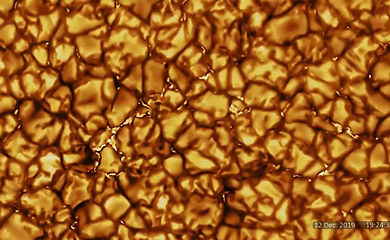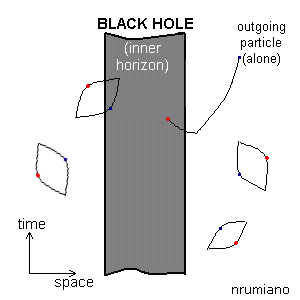
Physics Stuff
Odds and Ends for the Classroom and Beyond
Some answers, useful resources and more questions.

Some Modelling constructs and Epistimology
For discussion exploring strucure of concepts in Physics from Axioms, Principles, Laws to Solutions see this page
Scientific knowledge is tentative but durable. Induction and deduction are at the heart of empiricism. In the process of induction, one generalizes from a set of specific cases-a search for generality; in the process of deduction, one generates specifics from a general rule-a search for specificity.
As scientists we must presume the Uniformity of Nature principle. If this presumption is wrong, inferred conclusions based upon what, in actuality are sets of laws limited in scope are unjustified. We must believe that the results of induction are correct because we presume that the entire population that we cannot possible examine has the same traits as exhibited in a sample of which we observe.
The archetype theory is Newton's as he inducted that the laws of gravitional forces of attraction are the same as the inertial laws that govern matter on Earth. Kepler and Galileo had believed wrongly in Gilbert's idea that Magnetism was the driving force that takes the planets around the sun. The grand unified theory of the inverse square that Newton could not derive came later from Coulomb. The pervading theory even in Maxwell's time of the 1850s was still Newton's 1687 Action-at-distance in which gravitational and inertial forces are not mediated in the "Law of instantaneous action".

Maxwell's Demon and the Second law
In thermodynamics Maxwell's demon reflected the most prominent of statistical rather than dynamical (mechanical) theories. We lose point particle determinism as the microscopic tracing of trajectories is lost to the calculation of course aggregate statistics of the macroscopic.
For example we have the distribution of velocity curves of gases Maxwell determined independently with Boltzmann and use of mean and variance. Second law as law of laziness as heat goes in aggregate from hot to cold, useful work to useless.

Black Holes and Thermodynamics
With one equation, Enthalpy=internal energy+ pressure*volume and First Law we have:
There is an unhappy marriage of Cosmological and Anthropic Principles in our fluid model of the Universe. We model our universe as either a (static) dust or a perfect fluid of comparable cells of essentially vacua peppered with filaments of galaxies. These are simplified types of fluids in which local group aggregations of neighbouring galaxies are the representative cell elements. In the simple dust model we view the universe as a pressure-free non-viscous (i.e. perfect in also not conducting heat) fluid. The group filaments have no random motion and at the interface surface between adjacent cells there is both no (shear) force parallel (along) their mutual surfaces or a push-pull pressure perpendicular to their faces.

Field Theory
Newton did not like his own mechanistic picture of the universe and rather wanted to leave way for intervention by a divine agency.
Faraday's field concept suggested that forces were mediated and thus the action at a distance of Newton's forces can be dropped if we introduce a substance called the aether. Maxwell wrongly accepted this but happily did not need to use the aether. Instead he used Ampere's and Gauss's laws to come up with the first unified theory of the (now) four fundamental forces from which electromagnetic waves postulated as travelleling at the speed of light and did not need the aether for his theory to work.
The field assigns multiple numerical objects of the same kind to multi-varied properties of extended parts of space-time and is some (group representation) property of any extended part of the universe, which depends on points characterised by position and/or time. The Classical field concept primarily enables us to deal with the variable changes in a quantity across space and or time. In the first instance it is merely a means to encode related data as in temperature (scalar-valued) fields or pressure (co-vector-valued) isobars. The field here is a means to perform and enumerate a continuous set of observations across space at any instant. Faraday's field concept is though more than a useful means to describe the variation of quantities that characterise a phenomena.
The object to which the field maps is called a scalar, vector, tensor, spinor etc., depending on whether the objects at each point are scalars, vectors, tensors, spinors. For a scalar field the value of the field at each space point takes a scalar (numerical) value. The Higgs field is a complex scale field that pervades all of space. Any coupling to it causes masses in the coupling particle. For a vector valued (e.g. velocity) field representing wind directions, the field object at each point is a velocity vector that characterises both the directionality and magnitude of the wind at any instant.
When the field is viewed as part of a dynamical theory such as Newton's we can view it as a construct to overcome action-at a distance by characterising the directionality and strength of a force at each of the intervening points of space from source to receiver. We talk then in this context of a gravitational energy potential of the force field. The force is conservative because it can be derived from the gradient of this potential and as such must have zero circulation or curl. Possessing just divergence character as in Gauss's law as the mass (inertial) quality of matter renders it like a monopole.
The characterisation of the gravitational force is effected by a "gravitationally charged but inertial particle' moving through it and dynamically described by the first derivative (the change) of its potential (energy) with respect to the displacement to earth (say).
